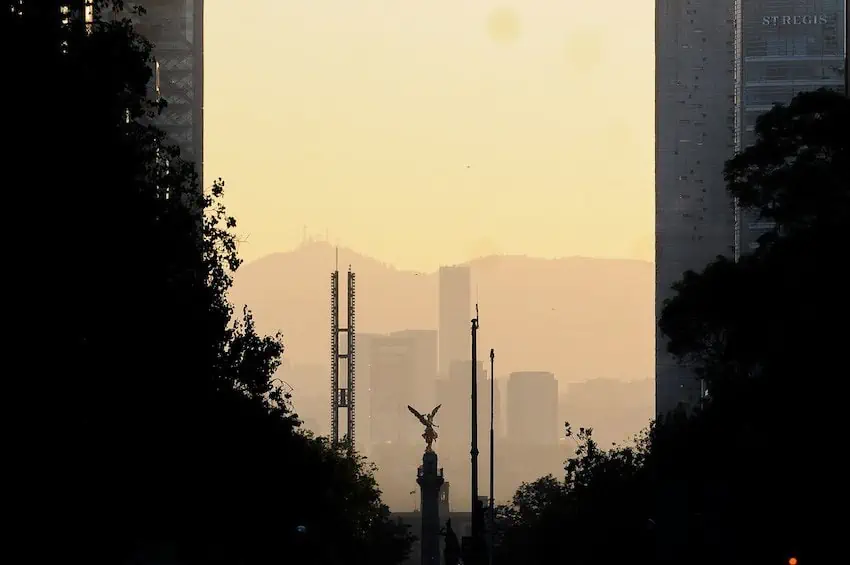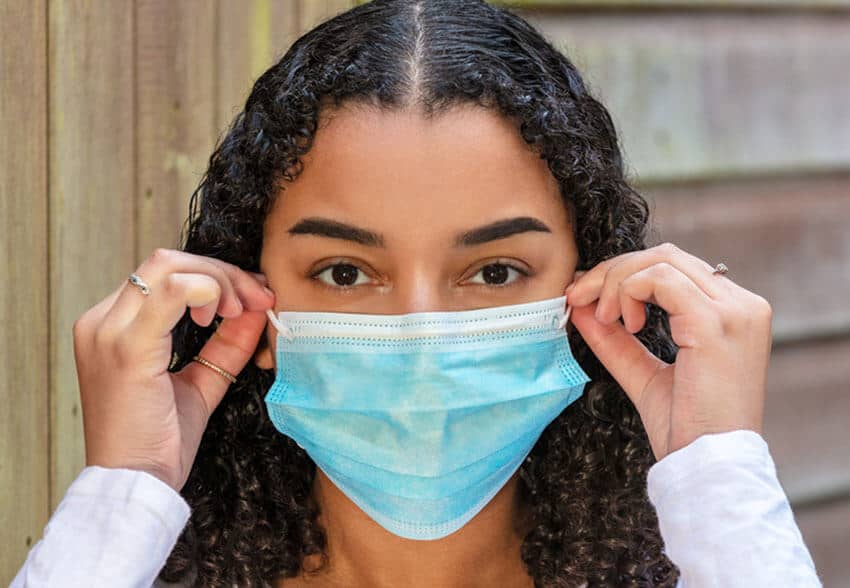Recently, I saw a post in a Facebook group for foreigners living in Mexico City. It simply said: “When does the air quality start getting better here? Like good (lmao).”
I wish there were an optimistic answer — or a clear day in sight. Unfortunately, a more realistic response is: “Maybe the air quality will improve for one day in a few weeks from now.”

Mexico City’s air is some of the worst you can breathe on this planet.
Swiss air quality awareness group IQAir rates it the 14th most polluted city in the world, the worst rating of any metropolis in Latin America. From January to August 2023, the city only registered 55 days of fresh air, meaning air quality was poor 77% of the time.
Why is the air quality so poor in Mexico City?
Air quality is measured on a scale of 0 to 500, with 0 being perfect. On a typical day in Mexico City, the air quality index (AQI) hovers around 100, largely due to pollutants from vehicle emissions.
Over five million cars circulate the city daily, releasing carbon monoxide, hydrocarbons and nitrogen oxides into the air we breathe on the streets and in our homes. In many cities, those emissions disperse and dissipate after peak travel times. Mexico City, however, is in a valley, so contaminants rise and settle like glitter in a snow globe, every day.

This year, several additional factors have worsened air quality in Mexico City. Heightened activity of the nearby Popocatepetl volcano, forest fires in central Mexico and reduced rainfall have made the air especially heavy in 2024. Also impacting air quality in Mexico City are residential and commercial emissions including the burning of gas for stoves and heaters, household products, personal care products, paints and pesticides.
Despite the persistence of poor air quality in Mexico City, the air is actually much better today than it was 30 years ago.
Air pollution in Mexico City reached its peak in the 1980s and 1990s when all five major air pollutants (ozone, carbon monoxide, sulfur dioxide, nitrogen dioxide and airborne particles) were at record highs. Since then, federal and city-level initiatives to monitor and limit emissions have reduced atmospheric concentrations of lead, sulfur dioxide and carbon monoxide. Ozone and suspended particle (PM) concentrations in Mexico City, however, are still above federal and international air quality standards.
What does a pulmonologist have to say?
Sneezing and coughing more than usual this spring? Pulmonologist Dr. Paula Olvera of Mexico’s National Institute for Respiratory Illnesses (INER) says an increased presence of two major pollutants will cause an immediate allergic reaction.

The big two for lung health are Particulate Matter 2.5 (PM2.5), present in vehicle emissions, and PM10, which includes dust from construction sites, landfills and agriculture, wildfires and industrial emissions. Airborne particles are measured by their diameter, and anything smaller than 10 micrometers is inhalable by the lungs, causing lung tissue to become inflamed.
“It is very common that people come here to live in Mexico City and they develop rhinitis, which causes a lot of sneezing, discomfort and nasal congestion… it is not very serious, but it is persistent,” remarks Dr. Olvera. “Then, they go to Cuernavaca and it’s as if they were never sick,” she continues.
Though rhinitis is manageable with allergy medication, eye drops and (many) tissues, over time, daily inflammation of the lungs and respiratory system can lead to other illnesses, including lung cancer.
According to the World Resources Institute, in 2019, Mexico reported more than 48,000 premature deaths attributable to exposure to polluted air. Beatriz Cárdenas, director of global air quality at the World Resources Institute, describes air pollution as the main environmental risk worldwide.
A study published in late 2023 found that exposure to PM2.5 in Mexico City was also associated with illnesses beyond the cardiovascular and respiratory systems, impacting digestion and even mental health. Though air pollution does cause immediate damage to your lungs, more serious consequences are typically seen after long-term exposure.
“To develop a more serious condition, such as cancer, you would need [approximately] 20 years of exposure,” says Dr. Olvera. “What happens is, poor air quality produces chronic inflammation. Chronic inflammation over time will cause the cells to mutate and make metaplasia,” she explains.
I love living in Mexico City. What can I do to protect my lungs?
It’s important to note that some populations are at greater risk for complications due to air pollution, including people with existing respiratory illnesses such as asthma, older adults with chronic heart or lung disease and children. If this is the case for you, you may want to consider living in an area with less traffic and more green spaces.

In addition, Dr. Olvera says there are several ways to protect your lung health while living in Mexico City.
1) Pay attention to the air quality
“The air quality [in Mexico City] is rated good, moderate, bad or extremely bad,” says Dr. Olvera. “Depending on the day’s rating, avoid doing exercise outdoors, or go to a gym where you will have less exposure.”
2) Monitor your oxygenation with an oximeter
That pandemic purchase is great for monitoring lung health long term.
Dr. Olvera says an oximeter is a great tool for keeping an eye on how the air quality is affecting you personally. The important thing is to first know what your baseline oxygenation is.
“For example, if you are oxygenating 98 all of the time, it’s normal for your oxygenation to vary two points, to 100 or 96,” explains Dr. Olvera. “But if one day you are at 90, this is a direct indication of a bronchial condition.”
If a cough lasts more than six weeks or you suddenly have trouble breathing, see a doctor.
3) Fill your home with air-purifying plants
Plants thrive in Mexico City despite the air, and can help us breathe better.

Easy-to-maintain pothos are a great choice for purifying your indoor environment, as well as peace lilies, palms, ferns and the beautiful Chinese evergreen (Aglaonema modestum).
4) Wear a face mask when the air quality is worse
An N95 face mask doesn’t just keep COVID-19 away — it can also block harmful air pollutants.
Face masks are typically given a rating of either N90, N95, N99 or N100, depending on the percentage of particulate matter they can filter. An N95 mask, for example, blocks against 95% of particulate matter larger than 0.3 micrograms, which includes the vast majority of PM2.5 and PM10.
5) Finally, invest in an air purifier
Many people have turned to air purifiers since the COVID-19 pandemic, both as a way to prevent the spread of airborne illnesses and to improve overall lung health.
How can I monitor Mexico City’s air quality on a daily basis?
To get an accurate reading of the air quality in your colonia, visit aire.cdmx.gob.mx, which also offers more information on pollutants by neighborhood.
The AQI also offers an air pollution monitor.
Also, keep alert for when Mexico City decrees a contingencia ambiental (environmental contingency). This is an emergency program to alert the public during severe air quality episodes and restricts certain vehicles from circulating to reduce the levels of ozone, PM2.5 and PM10 in the air.
When Mexico City is under environmental contingency, it’s best to stay indoors and limit physical activity.
By Caitlin Cooper, Mexico News Daily writer
